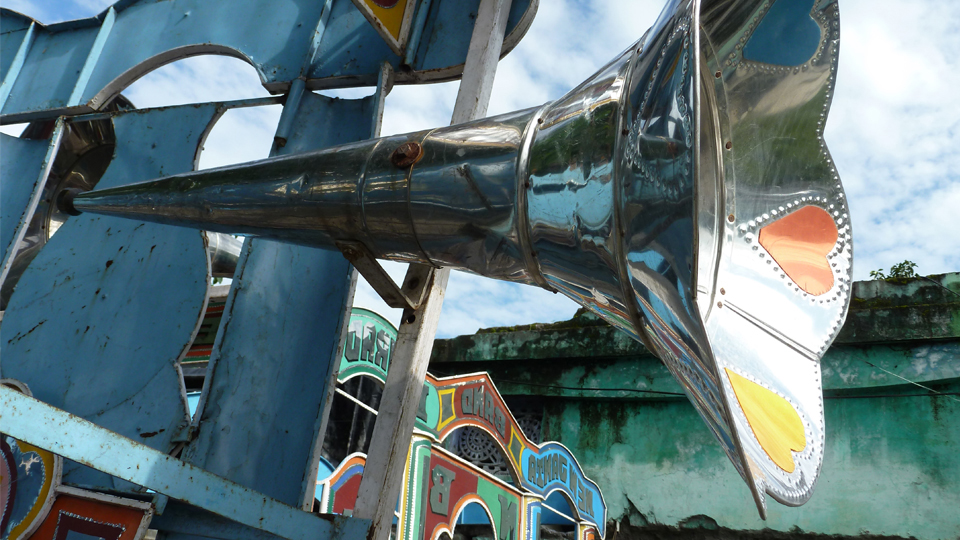
On the 12th of February 2022, The Centre for Sound, Technology and Culture hosted a day-long research colloquium in Goldsmiths’ SIML space, St James Church. The event brought together student researchers, academic staff and guest speakers from the departments of Music, Computing and Media, Communications and Cultural Studies.
Co-founder of the CSTC, Professor Atau Tanaka gave a warm welcome address to a packed-out room of students, staff and members of the public. The following four sessions included ten presentations/ performances that engaged with the colloquium’s theme “Assemblages and Their Affordances (Sonic, Embodied, Technological, Instrumental)” from several disciplinary and methodological perspectives.
Jenn Kirby’s fascinating talk and performance titled A Hybrid Design Approach to Aid Posthuman Expression and Challenge the Human-machine Dichotomy in Electronic Music Performance opened the first session. Her demonstration of her self-designed controller sparked a lively discussion. Jilliene Sellner was then joined virtually (via Zoom) by her colleagues from Heya Collective (Nour Sokhon, Beruit and Ayse Zaynep Hatipoglu, Istanbul) for a discussion and screening of their audiovisual work Blue Spaces. Heya is a research project that connects women who make sound and experimental music in the UK, Egypt, Lebanon and Turkey through live networked performances and collaborative sonic works.
Beatrice Vorster then presented her audiovisual work Rhythm as Aliveness which considered ideas of sentient rhythms in the edit to speculate on modes of machine listening. With some similarities but adopting a very different approach, Regan Bowering’s presentation titled Technologies of Feeling: The Production/reproduction of Everyday Rhythms in 1960s Avant-garde Jazz outlined initial theorisations based on the first year of her PhD research. These two diverse theoretical approaches to rhythm were then brought into conversation with each other, through a discussion convened by fellow theorist of rhythm and technology (and co-founder of the CSTC) Professor Julian Henriques.

Khabat Abas’ Talk and stunning improvised performance Celloness: Shadows and Projections of an Embodied Practice kicked off the third session, followed by a complimentary performance-talk by her supervisor Dr. Pete Furniss titled Reassembling the instrumentalist as embodied participatory space and performance of Furniss, An errant soothing (2017).

The evening sessions included guest performer Adam Bohman (London-based improviser and artist) who discussed his work with Dr Stephen Graham (Department of Music). Isidora Edwards’ performance talk explored questions of how women have shaped their relationship with machines and acoustic devices through performativity, materiality and imagination. Edwards transformed the SIML space into a low-lit visual landscape of synthesisers. Hardi Kurda’s fascinating presentation and performance titled Listening to The Found Scores explored speculative listening and the various listening perspectives on interpreting everyday materials through listening to the other senses, such as smell, taste, and touch. The event ended with Dr. Iris Garrelfs’s expressive and engaging improvised performance based on her work Breathing Through Wires.
The colloquium as a whole illuminated the rich variety of research of students and staff at Goldsmiths. Both attendees and presenters were grateful to the CSTC for providing a platform for student and staff work relating to sound, technology and culture to be shared, discussed and consolidated.
Written by Regan Bowering
Presenters/performers
Jenn Kirby | Jilliene Sellner | Beatrice Vorster | Regan Bowering | Response & discussion with Julian Henriques | Rachel Heavey | Khabat Abas | Pete Furniss | Adam Bohman – interview with Stephen Graham | Isidora Edwards | Hardi Kurda | Iris Garrelfs
